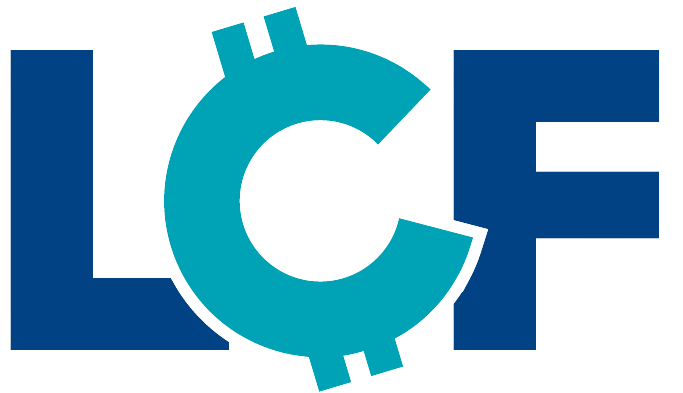Small Business Finance Dictionary
Apply Now For Business Funding
Running a small business involves juggling multiple responsibilities, from handling day-to-day operations, hiring a team, managing cash flow and working capital, and securing business loans and lines of credit. It’s highly complex, and for new business owners, there is much to learn.
Financing (and how you get it)
When you need business funding it’s important to understand the various financing options available, such as term loans, merchant cash advances, credit cards, Small Business Administration (SBA) loans, and their respective repayment terms and cost of capital. By grasping these concepts, you’ll be better equipped to make informed decisions when selecting a financial institution to partner with.
Another critical aspect of small business management is maintaining accurate financial statements, including balance sheets, income statements, and profit and loss statements. These documents provide a snapshot of your company’s financial health and can influence your creditworthiness and credit score. Those documents will be part of many funding applications.
Business Terminology
For entrepreneurs, familiarizing yourself with terms like accounts receivable, net income, depreciation, and amortization can help ensure that your bookkeeping is accurate and up-to-date, providing a solid foundation for making informed financial decisions.
Your small business’s liquidity, or the ease with which you can convert assets to cash, is also essential in managing your company’s finances. Understanding the difference between current assets and current liabilities, as well as concepts like net worth and credit limit, can help you accurately assess your business’s financial health and plan for future growth. Additionally, knowing the ins and outs of secured loans and unsecured loans, as well as alternative financing can help you make informed choices about the types of financing that best suit your business’s needs.
Building Credit
Navigating the world of credit can be a complex endeavor, with numerous credit bureaus, credit reports, and credit histories to consider. Understanding these terms and the factors that influence your business’s creditworthiness can help you maintain a healthy credit score and secure better financing options for your company. Additionally, a strong grasp of concepts like annual percentage rate (APR), fixed interest rates, and factor rates can help you better evaluate funding offers and choose the most cost-effective options for your business.
Finally, it’s crucial for small business owners to understand the various government agencies and regulations that may impact their operations. From working with the Small Business Administration to adhering to Internal Revenue Service (IRS) guidelines, being well-versed in the relevant business terms can help you navigate these relationships more effectively and ensure compliance with any applicable laws and regulations.
Financial Terms
A
Accounts Payable
The amount of money a business owes to its suppliers or vendors for goods or services received but not yet paid for.
Accounts Receivable
The amount of money owed to a business by its customers for goods or services provided but not yet paid for.
Accrual
The recognition of revenue or expenses when they are incurred, regardless of when payment is actually received or made.
Amortization
The process of gradually paying off a debt over a period of time through regular payments that include both principal and interest.
Angel Investor
A wealthy individual or fund who invests in a startup or early-stage company in exchange for equity ownership.
Annual Percentage Rate (APR)
The annual rate of interest charged on a loan or personal or business credit card balance, expressed as a percentage of the amount borrowed.
Articles of Incorporation
A legal document filed with the state government that establishes a corporation as a separate legal entity from its owners.
Automated Clearing House (ACH)
A payment system that allows businesses to electronically transfer funds between bank accounts.
B
B2B
Business-to-business, referring to companies that sell products or services to other businesses.
B2C
Business-to-consumer, referring to companies that sell products or services directly to consumers.
B2G
Business-to-government, referring to companies that sell products or services to government agencies.
Balance Sheet
A financial statement that shows a company’s assets, liabilities, and equity at a specific point in time.
Balance Transfer
The process of moving a balance from one institution to another with a lower interest or factor rate or better terms.
Bankruptcy
A legal process that allows a business to eliminate or restructure its debts under the protection of a court.
Business Credit Score
A numerical rating that reflects a business’s creditworthiness and ability to repay its debts.
Business Entity
A legal structure that defines a business as a separate entity from its owners, such as a corporation or LLC.
Business Model
The plan or strategy that a company uses to generate revenue and make a profit.
Business Plan
A comprehensive document that outlines a company’s goals, strategies, and financial projections.
C
C Corporation
A type of corporation that is taxed separately from its owners and provides liability protection to shareholders.
Capital
The money or assets that a business uses to operate and invest in its growth.
Cashflow
The amount of cash that flows in and out of a business over a specified period of time.
Cash on Hand
The amount of cash that a business has readily available at any given time..
Certificate of Good Standing
A document that certifies that a business is active and is authorized to do business.
Collateral
Assets or property that a company or individual pledges as security when receiving funding.
Commercial Loan
A loan designed specifically for businesses to fund operations or make capital investments.
Consolidation
The process of combining multiple debts into a single, larger debt.
Cost of Goods Sold (COGS)
The direct costs associated with producing or selling a product, including materials and labor.
Credit Analysis
The process of evaluating a merchant or individual’s creditworthiness and ability to repay funding.
Credit Limit
The maximum amount of credit that an institution is willing to extend to a company or individual.
Credit Line
A revolving line of credit that allows a company to receive up to a certain amount of money over a specific period of time.
Credit Report
A detailed report of an individual’s credit history, including their credit history, payment history, and outstanding debts.
Credit Score
A numerical rating that reflects an individual’s creditworthiness and ability to repay debts.
Creditor
A person or organization to whom money is owed.
D
Daily Remittance
A daily payment of a percentage of a business’s sales to repay a merchant cash advance.
Debt Consolidation
The process of combining multiple debts into a single, larger debt.
Debt Service Coverage Ratio (DSCR)
A financial ratio used to assess a company’s ability to service its debt obligations.
Default
The failure to repay a debt on time or in full, which can result in damages, fees, and reduction of one’s credit score.
E
E-commerce
The buying and selling of goods and services online.
Earnings Before Interest, Taxes, Depreciation, and Amortization (EBITDA)
A measure of a company’s profitability that excludes certain expenses.
Equipment Financing
Financing used to purchase or lease equipment for a business.
Equity
The value of a company’s assets minus its liabilities, representing the net worth of the company.
F
Factor Rate
The multiplier used to calculate the total cost of a merchant cash advance.
FICO Score
A credit score developed by the Fair Isaac Corporation that is widely used by financiers to assess creditworthiness.
Financial Statement
A document that summarizes a company’s financial position, including its income, expenses, assets, and liabilities.
Flexible Payment
A loan or other financial product with adjustable terms that can be customized.
H
High-Risk Industry
An industry that is considered risky due to factors such as high levels of competition, regulatory hurdles, or market volatility.
Holdback
The percentage of your revenues pledged to a merchant cash advance or the amount that is withheld by an institution until the funding is repaid in full.
Home-based Business
A business that is operated out of the owner’s home.
I
Interest
The cost of borrowing money through a loan or a credit card, usually expressed as a percentage of the amount borrowed.
Interest Rate
The annual rate of interest charged on a loan or credit card balance, expressed as a percentage of the amount borrowed.
Inventory
The goods or materials that a business has on hand or in transit for the purpose of sale.
Invoice Factoring
The process of selling unpaid invoices to a third-party company in exchange for immediate cash.
Invoice Financing
Funding secured by unpaid invoices.
K
Key Performance Indicator (KPI)
A metric used to measure a company’s progress towards achieving its goals.
L
Lender
A person or organization that loans money to a borrower.
Lien
A legal claim on property or assets that serves as collateral for financing.
Limited Liability Company (LLC)
A type of business entity that combines the liability protection of a corporation with the tax benefits of a partnership.
Line of Credit
A revolving line of credit that allows a company to obtain a certain amount of money over a specific period of time.
Loan Term
The length of time over which a loan must be repaid.
Long-Term Debt
Debt that must be repaid over a period of more than one year.
M
Market Research
The process of gathering and analyzing information about a market, including its size, competition, and customer preferences.
Marketing Plan
A comprehensive document that outlines a company’s marketing goals, strategies, and tactics.
Merchant Cash Advance (MCA)
A type of financing in which a provider advances a lump sum of cash to a business in exchange for a percentage of its future sales.
Metrics
Quantifiable measures used to track and evaluate a company’s performance.
Monthly Credit Card Sales
The total amount of revenue generated by a business from credit card transactions in a given month.
N
Net Income
The total amount of revenue a company earns after deducting all of its expenses.
O
Operating Expenses
The day-to-day expenses required to operate a business, such as rent, utilities, and salaries.
Operating Income
The amount of income a business generates from its operations, calculated by subtracting operating expenses from revenue.
Origination Fee
A fee charged by a financier to cover the cost of processing a funding application.
P
Payable
The amount of money a business owes to its suppliers or vendors for goods or services received but not yet paid for.
Payback Period
The length of time it takes to fully repay funding or other debt.
Payment Schedule
A plan that outlines the dates and amounts of payments that a company or individual is required to make on financing or other debt.
Personal Guarantee
A pledge by an individual to use their personal assets to repay funding if the business is unable to do so.
Point of Sale (POS) System
A software and hardware system used to process sales transactions in a retail or hospitality environment.
Pre-Approval
A preliminary approval of a funding application based on a creditworthiness and financial history.
Prepayment Penalty
A fee an institution can charge if funding is repaid before the end of its term.
Prime Rate
The rate that banks charge their most creditworthy customers for loans or other financing.
Principal
The amount of money provided on a loan before any fees.
Profit and Loss Statement (P&L)
A financial statement that shows a company’s revenue, expenses, and net income or loss over a specific period of time.
Purchase Price
The amount of money paid for a portion of a company’s future revenues before any fees.
R
Refinancing
The process of replacing existing financing with a new financing that has better terms or lower rates.
Repayment Schedule
A plan that outlines the dates and amounts of payments that is required to make on a loan or other financing.
Return on Investment (ROI)
A measure of the return earned on an investment, calculated by dividing the net profit by the amount invested.
Revenue
The total amount of money earned by a business from its sales of goods or services.
Revolving Credit
A line of credit that allows an individual or company to utilize up to a certain amount of money over a specific period of time.
S
SBA Loan (Small Business Administration Loan)
A government-backed loan designed to help small businesses grow and expand.
Secured Loan
A loan that is backed by collateral, such as property or equipment.
Short-Term Debt
Debt that must be repaid over a period of less than one year.
Sole Proprietorship
A type of business in which the owner is personally responsible for all aspects of the business, including debts and liabilities.
Startup Costs
The expenses required to start a new business, such as equipment, inventory, and marketing.
T
Term Loan
A loan that must be repaid over a fixed period of time, usually with a set interest rate.
Time in Business
The length of time a business has been operating, sometimes used to assess creditworthiness.
U
Unsecured Loan
A loan that is not backed by collateral and is based solely on the borrower’s creditworthiness and ability to repay.
V
Variable Interest Rate
An interest rate that can change over time based on market conditions or other factors.
W
Working Capital
The amount of money a business has available to cover its day-to-day operating expenses.
Latest Blog & Articles
Effective Budgeting Tips for Small Business Owners
As a small business owner, managing your business finances effectively is crucial to the success and long term viability...
The Essential How-To Guide for Funding Your Restaurant
Starting a restaurant is a dream for many entrepreneurs, but turning that dream into reality requires more than just...
Securing Business Funding with Bad Credit in 2024
Obtaining financing can be a pivotal step for small business owners looking to scale their ventures. However, for those...





